Consumers managed to keep up their thirst for soft drinks last year. Despite the recession and a damp summer, sales in the take-home sector grew 1% in volume and 2% in value to £6.2bn in 2009, according to the 2010 Britvic Soft Drinks Report.
Cola was a strong winner for the year, increasing its leadership by growing 4% in value and increasing its share of the market to 22%. The report found there was a "notable performance from low-calorie cola and particularly Pepsi Max, which grew by 9%".
Glucose and stimulant drinks (worth £567m) were up in both volume and value, making this the fastest-growing sub-category again. Meanwhile, ’water plus’, or ’functional water’, as well as juice drinks and fruit carbonates returned to growth after declining in 2008.
Smoothies, however, didn’t perform so well and were hardest hit, dropping 27% in value and volume as consumers continued to switch to cheaper alternatives.
Britvic sales director Murray Harris says: "Despite the economy casting a cloud over consumer confidence, it is clear that soft drinks tap into consumers’ evolving shopping behaviour by offering choice and affordable options. The wide range of sub-categories means there is something for even the tightest of budgets."
Harris added that "good value brands" had held their ground, with Coca-Cola the top brand for "value" and worth just over £1bn, up 4% on the previous year.
In second place was Lucozade worth £339m, followed by Robinsons worth £307m.
Harris continues: "For the second year in a row the soft drinks category has proven that the secret to resilience is providing good old-fashioned value for money, but not ignoring that enjoyment is still a huge motivational factor. The big question now is that as the economy improves, will consumers return to their pre-recession spending habits or is the budget mindset here to stay?"
GlaxoSmithKline (GSK) says soft drinks is the largest impulse category in forecourts, selling nearly three times more than crisps and snacks £196m for soft drinks compared to £74m for crisps and snacks (AC Nielsen multiple forecourts MAT to w/e December 12, 2009, TNS trend report, IGD 2009).
It adds: "Top-up shopping in forecourts has been particularly affected as shoppers ’tighten their belts’ and shop for value in less premium channels".
Meanwhile, sports and energy drinks is by far the biggest category within forecourts. According to GSK: "This is predominantly driven by innovation in the stimulation energy drinks ranges".
In addition, GSK says that juice drinks are performing well in the impulse soft drinks segments with growth driven by NPD, especially Ribena strawberry 500ml and Capri Sun 330ml (source as before).
The weather also has a big part to play in the soft drinks category. Jonathan Summerley, purchasing director at Hancocks, says: "Three cool summers have proved to be a challenge for the soft drinks market. The weather makes a significant difference but independent retailers are the most able to react quickly when a warm spell looms, making this a useful opportunity for them.
"One area of the drinks market that is perhaps slightly less weather dependent is sports and energy drinks. Brands such as Lucozade and Red Bull tend to maintain a good level of sales during the colder months as consumers buy for the energy boost requirement in addition to the image it portrays of them.
"The market continues to see a shift towards less fizzy and healthier drink options. However, the huge volumes sold in the carbonates and fizzy sectors still make this a significant opportunity for independents. It is a question of balance and choice in the range."
Meanwhile, PepsiCo UK recently announced a 10-year pledge to focus future profit and growth on healthier products. In the launch of its first Health Report, the company sets out its commitment to transform its product portfolio to meet consumer demand for healthier products. This includes reshaping the savoury snack and soft drink categories and focusing its future research and development on products with positive nutrition including fruit, fibre, wholegrain and vegetables.
One of its pledges is that 65% of carbonated soft drink can and bottle sales will be ’no sugar’ by 2015.
PepsiCo UK president Richard Evans explains: "In recent years we have responded to public health concerns by tackling the core of our business, reducing salt and saturated fat on crisps and snacks, and building strong no-sugar cola brands. We’ve achieved a great deal, but we’re committed to going further.
"Transforming the business won’t be easy but the changes we propose are real and achievable. Our commitments go with the grain of where our consumers are going. I believe that companies like ours have a responsibility to lead change and to be accountable for it."
Meal deals
PepsiCo is pushing its Tropicana brand during 2010 and says the chilled juice category is currently worth almost £1bn (Nielsen) with sales driven by increasing consumer demand for not-from-concentrate and healthier options. It adds that Tropicana is the only brand currently in growth as consumers look to trusted brands offering quality products that provide great value and the company therefore advises retailers to focus on value, best sellers and merchandising.
To boost sales, it recommends placing a range of crisps and snacks close to juices and offering meal deals as this will drive sales by appealing to shoppers looking for value and a healthier choice at lunchtime.
Vimto says the recession and damp summer of 2009 failed to hit its sales. It says its Vimto fizzy 500ml is growing in value by 8.7% (Synovate Aztec aggregated forecourt data, quarter ending February 7, 2010) and has been well received by forecourt shoppers. Neil Gibson, head of marketing at Vimto Soft Drinks, adds: "Summer 2009 was extremely successful for the Vimto brand as we saw 30.4% brand growth in the total market and over the year attracted an additional 1.2m households to our cordial, ready-to-drink and carbonate products. The Vimto brand is now currently worth £45.1m, having doubled in size in seven years and it has grown for the past 14 consecutive months.
"We launched Vimto’s ’Seriously Mixed Up Fruit’ advertising campaign at the beginning of last summer including TV, radio and digital activity and this, together with the launch of the Vimto pouch to the impulse category, boosted trial and awareness. Vimto’s success demonstrates that growth can be achieved despite these challenges and we will be investing a further 20% in supporting our brands this year with a £6m programme of activity to drive sales and demand."
One area which has certainly been steaming ahead is energy drinks. Tom Smith, trade communications manager at Red Bull, says: "Functional products are now a fundamental part of consumers’ everyday lives. People around the UK are now more than ever having to balance their work and social lives and look to products which fit with their busy lifestyles, helping them to get the most out of their day. Sports and energy continues to go from strength to strength, driving the overall soft drinks market."
According to Red Bull, this category is currently worth more than £708m (AC Nielsen MAT January 23, 2010) .
Smith says: "These drinks are products which are bought for their functional benefits. These aren’t luxury purchases that consumers might look to cut down on, so even during a tough economic climate, the products still remain relevant to their daily lives and the category continues to strive.
"When looking at sports and energy shoppers, it’s clear that they have a heavy reliance on branded products. Although there has been a slight increase in the number of own-label products in the category, a massive 82% of sports and energy products purchased are branded versus just 18% of own-label. Compare this to overall soft drinks, where own-label accounts for 35.8% of purchases (TNS Worldpanel Purchase September 09) and it’s clear that when it comes to this category, shoppers look to brands they trust to deliver functionality."
Smith says that having the right range of drinks branded versus own-label as well as different sizes of cans, will give shoppers the choice they want.
Simon Gray, managing director at Boost, says the past 12 months have been very interesting for the sector. He explains: "Over the past year, consumers have fundamentally changed as a result of the recession and quality and value are now firmly at the top of their shopping lists, and the Boost brand strongly resonates with this."
According to Gray, the Yorkshire-based business has reported annual sales up 40% year-on-year. It was also placed at number 44 in the prestigious 2009 Sunday Times Fast Track 100 list of the fastest-growing UK companies after recording sales growth of 88% between 2005 and 2008.
With key trade account sales up 46% this year, Gray adds Boost is continuing to work closely with independent retailers to widen distribution across the UK and is running its first ever direct-to-consumer advertising campaign.
GSK recently launched Lucozade Sport Lite into this category. The company says the low-calorie sports drink appeals to everyday exercisers and social sports participants who want energy and hydration but not calories. The product is available in two flavours: lemon & lime, and summer berries, and comes in a 500ml bottle containing 50 calories.
Teresa Smyth, GSK category development manager, says: "Many people who exercise do not purchase or consume a sports drink because of calorie content. To meet consumer demand for a low-calorie sports drink we used our sports nutrition expertise and developed Lucozade Sport Lite. This new product offers stockists a massive sales opportunity."
Meanwhile, Selena Taylor, trade communications manager at Coca-Cola Enterprises (CCE), says: "Taste is a key consideration for shoppers when making an energy drink purchasing decision and our wide range of variants offers consumers the opportunity to enjoy Relentless and Monster in a variety of flavours. For example, the morning energy occasion is growing increasingly popular with 25% of energy drinks now consumed at this time of day (Stimulate Energy pre-12 noon, TNS Worldpanel Usage), for which Relentless Energy juiced berry and Monster khaos are ideal propositions."
CCE recently launched a new report called ’Open More Business’ which looks at how people shop the soft drinks category. It says the future looks rosy for the category, including a £1.4bn growth opportunity which CCE is looking to target over the next five years. It could get this growth if existing soft drinks shoppers buyers purchased just one extra soft drink a fortnight. The report includes the following key findings for forecourts:
l 43% of shoppers just buy fuel and 27% just buy from the shop, while 30% buy from both.
l The key figure is the opportunity that the 43% of ’fuel-only’ shoppers represent. Nearly all of these shoppers will have to enter the forecourt store to pay for their fuel. So CCE’s objective is to try to influence that shopper at key points of interruption all the way along the path to purchase from when they first drive on to the forecourt to when they go to pay at the till.
l An estimated £26.8m is lost each year in forecourts by retailers simply not having the right stock on shelf and not letting soft drinks buyers know it’s there.
l The busiest periods for soft drinks are during lunch (12pm-2pm) and after work (5pm-7pm) so shelves should be re-stocked ready for these peak periods.
l Sectors like energy, sport and water perform above average in this environment compared with other convenience channels so these will perform best when allowed the most space on the shelf. These should be placed at key impulse points like the main walkway from the store entrance to the till or, even better, at the till point.
CCE’s Taylor says: "With summer and the much-anticipated World Cup swiftly approaching, it is more important than ever for retailers to help shoppers find what they want quickly. So, on the main soft drinks fixture the correct range, space and layout all contribute to a quick and easy sale. Ideally, everything should be directly linked to satisfying customers’ needs as quickly and efficiently as possible. We know that stocking brand leaders such as Coca-Cola will highlight the fixture to shoppers and help increase trial and boost impulse purchase. Cluttered fixtures often lead to shoppers being unable to find what they are looking for, and shoppers who can’t find products might easily assume retailers don’t stock them."
Meanwhile, Hancocks says one major current trend is the shift towards 500ml bottles. The company’s purchasing director Jonathan Summerley says that individual bottles are generally being bought to drink on the go, sometimes throughout the day or sometimes in the car. He adds that the 500ml bottle is a clear winner for convenience retailers because of its higher retail price and the increased cash it puts through the till.
What’s new...
l Irn-Bru is backed by its biggest ever spend via a £15m marketing campaign this year, including a new TV ad out this month which features a mix of live and animated action. Irn-Bru will also continue sponsorship of the Rugby Football League Super League.
l Hancocks has launched a new value drink called Emerge, which it describes as a ’Red Bull lookalike’ but at a fraction of the price. The 250ml cans are price-marked at 35p, and Hancocks reckons there’s a great opportunity to sell three cans for £1. Jonathan Summerley, Hancocks purchasing director, says: "There is no denying that Red Bull is a great product but many price-conscious shoppers find it a bit pricey and so will welcome a value alternative. We expect Emerge to become an extremely popular purchase very quickly."
l Bottlegreen Drinks Co has launched its first convenience product, Bottlegreen Still, which is described as a new range of natural ready-to-drink still products aimed at the adult on-the-go market. It is available in 330ml clear PET bottles in three flavours: pomegranate & elderflower, apple & ginger, and elderflower. According to the company, each bottle contains half the adult RDA of vitamin C and much less sugar than fruit juice.
l Rubicon is planning its biggest year of marketing support with a deal to sponsor a Summer of Cricket on Sky Sports. Opening with the channel’s broadcast coverage of the ICC Twenty 20 World Cup in the West Indies, the company says the sponsorship forms part of a £5m brand support package for Rubicon in 2010 and is the brand’s biggest investment to date.
Adrian Troy, head of marketing at AG Barr, says: "We know cricket is very important to our consumers and is the second most popular sport watched on TV in the UK (Source: TGI). We fully expect Rubicon’s massively increased exposure during Sky Sports’ Summer of Cricket to further boost buoyant sales for the brand". Rubicon’s TV sponsorship will be supported through point of sale material in store. The activity kicks off a number of cricket initiatives for Rubicon throughout the year.
l Sunny Delight Beverage Company is launching a 15% juice drink, with a lower rrp of £1.39 for a 1ltr bottle and 95p for 500ml, which it says is designed to appeal to the growing number of customers looking to make savings on their shopping. It will replace the higher juice variant launched in the UK in 2009. The new product also has a greater shelf-life of 120 days (previously it was 75 days).
l In what it says is the first partnership of its kind for the brand, Coca-Cola Great Britain (CCGB) has teamed up with ITV1 to bring Coca-Cola to Saturday night meal times. Using the phrase ’Saturday night tastes better with Coca-Cola and ITV1’, the partnership will include a series of ads aired exclusively on ITV1 and further supported by radio, digital, outdoor, point of sale material and on-pack activity.
The company says the objective is "to reinforce their collective role in bringing people together for a fun, enjoyable Saturday mealtime". The ads celebrate traditional family get-togethers, with the first depicting a happy family meal occasion.
l Highland Spring is running a number of promotions, including its Best Seat in the House offer this summer. Featuring Andy Murray, the promotion is designed to highlight the brand’s sponsorship of the tennis ace and let consumers collect tokens on special promotional packs to swap for rewards such as a limited-edition inflatable tennis ball chair. In addition, all those who register for a reward will be entered into a free prize draw to win a family trip to a slam tennis experience in 2011.
l CCE’s 5 Alive is back with a new look and an integrated marketing campaign which features new TV and outdoor advertising. The brand, which was first launched in the UK in 1981, also has a new apple flavour. The advertising features a Dodo being brought back to life from extinction with the strapline: ’Come Alive with 5 Alive’. At the heart of the brand’s new digital campaign, is a Facebook page where consumers can see the new ad, buy the music from it on iTunes and find out more about 5 Alive.
l Britvic has launched Robinsons Select which it says is an everyday premium squash made with the best ingredients and designed to appeal to a more adult palate. With a rrp of £1.59 for a 850ml bottle, it is available in four variants including orange, mandarin & peach, and apple & wild blueberry.
l Fanta fans are being encouraged to ’Grab a Taste of Friday’ via a new campaign for Fanta. Brand owner CCE wants to position Fanta as a signpost for the start of the weekend for teens and mums. An on-pack promotion rewards shoppers with special family offers at venues such as AMF Bowling, Burger King, Haven and Butlins holidays, and Merlin Theme Parks. The promotion is running on 330ml cans, 330ml can multipacks, 2ltr PET and 500ml PET bottles with fun, new on-pack creative and impactful messaging. The ’Grab a Taste of Friday’ activity is expected to reach 4.4 million teens and 18.5 million mums.
l Dr Pepper is backed by a new multi-platform brand campaign themed around the ’What’s the Worst that Could Happen?’ question. This includes the brand’s first standalone push online on Facebook where internet users have the chance to win £1,000.
In addition, ringtones are being given away on nine million 330ml cans and 500ml bottles consumers are challenged to accept a ringtone that could be good or could be really embarrassing.
top Tips to boost sales
1) Understand your local market. Is there a lot of passing lunchtime trade from people on the road? Only by knowing who your customers are can you make the most of the soft drinks category.
2) Watch the weather obsessively.
3) Chill out maintain a full chilled display stocked with a good range. Most individual drinks are sold to consume immediately and are bought on impulse or because someone is thirsty. Shoppers want to see choice and want their drink cold enough to enjoy straight away.
4) Balance the mix of core brands with higher-margin secondary brands.
5) Stock a good range of pocket money kids’ drinks if your locality demands it.
(Source: Hancocks)
Top 10 Brands, Value (Take Home Soft Drinks)
Brand£ millions% change
Coca-Cola1,0184%
Lucozade 339-3%
Robinsons307 2%
Pepsi-Cola 271 5%
Tropicana270-6%
Red Bull 186 0%
Ribena 127-3%
Schweppes126 4%
Actimel 116 7%
Volvic 111-7%
(Source: Nielsen Scantrack, MAT December 26, 2009)
World cup score
The World Cup is being pitched as a great opportunity for the independent market. Jonathan Summerley, Hancocks purchasing director, says: "While supermarkets benefit from a greater weighting of well-planned female shoppers, independent retailers thrive on the last-minute, often male, impulse purchase. As the World Cup will mean so much more to men than women, they might well be the ones popping out for supplies before a social gathering to watch an important match.
"While soft drinks might not be high on their list, the likelihood is that they will stock up with them, in addition to sweets, snacks and, of course, beer!
"We would advise any independent retailer to put some theatre into their store in the run up to the World Cup, showing their customers that they will be the perfect stop off for all manner of supplies."
Hancocks will be selling a number of non food World Cup items such as flags, footballs and window stickers aimed at helping with such a display.
Meanwhile, inspired by the ’joyous dance celebrations often seen in Africa’, CCE is launching Coca-Cola’s What’s Your Celebration? marketing campaign which invites fans in the home nations to ’unleash their African rhythm’ and express their optimism and passion for the game through their own dance celebrations.
A series of ads for the campaign will star Roger Milla, the legendary footballer from Cameroon famed for his iconic celebratory dance during the World Cup in 1990. And Coca-Cola is producing a 60-minute documentary honouring the world’s most famous goal celebrations.
There will also be on-pack promotions to win World Cup tickets.
Impulse Channel Split, Value (Take Home Soft Drinks)
Channels£ millionsshare change
1 Co-ops & symbols758 41% 2%
2 Independents704 38%-4%
3 Total multiples forecourts 197 11%-8%
4 Other impulse multiples 100 5%-20%
5 Total multiples split offs GB 46 3% -11%
Total Impulse GB 1837 100%-3%
(Source: Nielsen Scantrack, MAT 26 December 2009)


















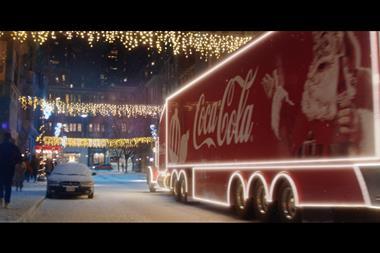
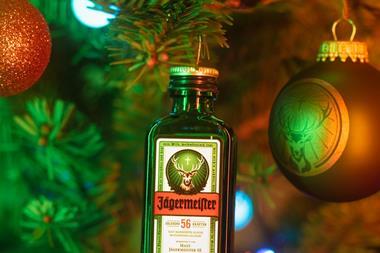
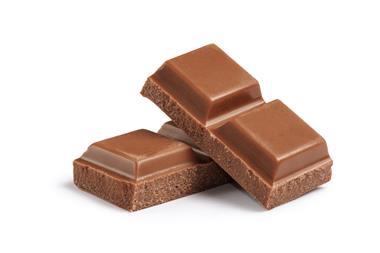
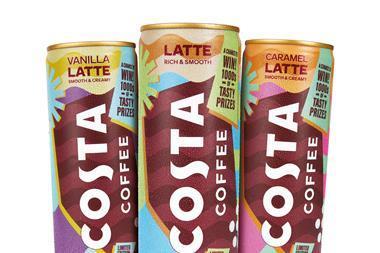

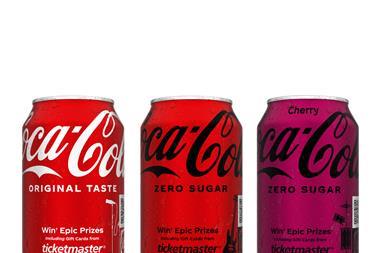
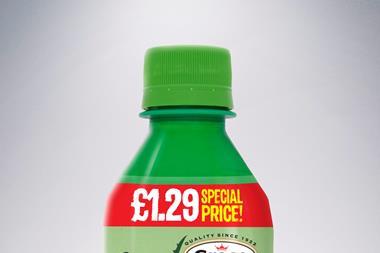
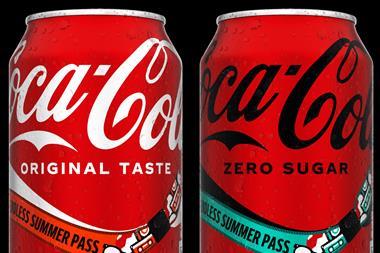

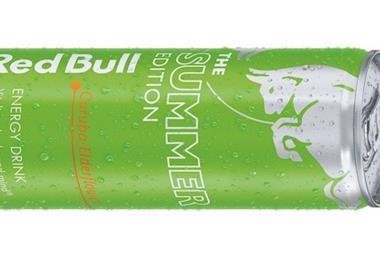
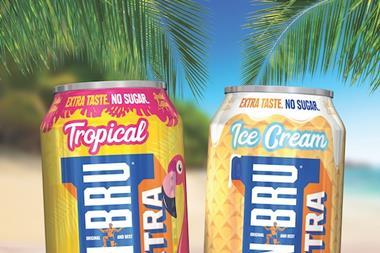
No comments yet